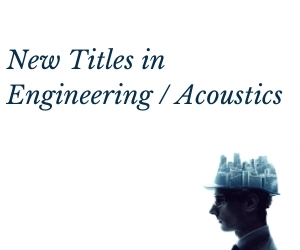System Upgrade on Tue, May 28th, 2024 at 2am (EDT)
Existing users will be able to log into the site and access content. However, E-commerce and registration of new users may not be available for up to 12 hours.For online purchase, please visit us again. Contact us at customercare@wspc.com for any enquiries.
This book presents the results of the second workshop on Neural Adaptive Control Technology, NACT II, held on September 9–10, 1996, in Berlin. The workshop was organised in connection with a three-year European-Union-funded Basic Research Project in the ESPRIT framework, called NACT, a collaboration between Daimler-Benz (Germany) and the University of Glasgow (Scotland).
The NACT project, which began on 1 April 1994, is a study of the fundamental properties of neural-network-based adaptive control systems. Where possible, links with traditional adaptive control systems are exploited. A major aim is to develop a systematic engineering procedure for designing neural controllers for nonlinear dynamic systems. The techniques developed are being evaluated on concrete industrial problems from within the Daimler-Benz group of companies.
The aim of the workshop was to bring together selected invited specialists in the fields of adaptive control, nonlinear systems and neural networks. The first workshop (NACT I) took place in Glasgow in May 1995 and was mainly devoted to theoretical issues of neural adaptive control. Besides monitoring further development of theory, the NACT II workshop was focused on industrial applications and software tools. This context dictated the focus of the book and guided the editors in the choice of the papers and their subsequent reshaping into substantive book chapters. Thus, with the project having progressed into its applications stage, emphasis is put on the transfer of theory of neural adaptive engineering into industrial practice. The contributors are therefore both renowned academics and practitioners from major industrial users of neurocontrol.
Contents:
- Neural Adaptive Control Technology (K J Hunt et al.)
- Nonlinear Control: Adaptation and Learning (H K Khalil)
- A Neural Adaptive Control Technique for Manufacturing Scheduling (G A Rovithakis et al.)
- Approximate Inverse-Dynamics Based Robust Control Using Static and Dynamic Feedback (C Szcpesvári & A Lörincz)
- Vision-Based Robot Motion Planning Using a Topology Representing Neural Network (M Zeller et al.)
- Dynamic Multi-Layer Perceptron Networks: Application to the Nonlinear Identification and Predictive Control of a Heat Exchanger (M Ayoubi)
- Adaptive Control Using Localised Radial Basis Function Networks (J P Fredsted)
- Implementation of Neural Adaptive Control Strategies for Industrial Automation (A Hambrecht & D Neumerkel)
- Application of Neural Networks for Control of Four-Quadrant Converters in Railway Propulsion Systems (S Scheffler & J Böcker)
Readership: Academic and industrial researchers interested in neural networks, control engineering, electrical & electronic engineering, systems and knowledge engineering.























